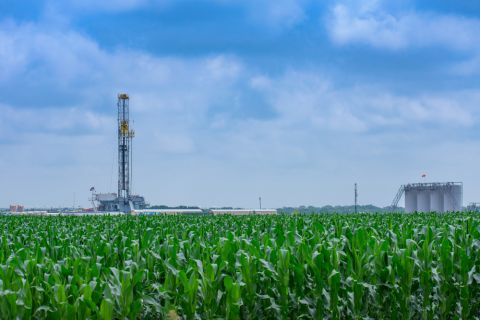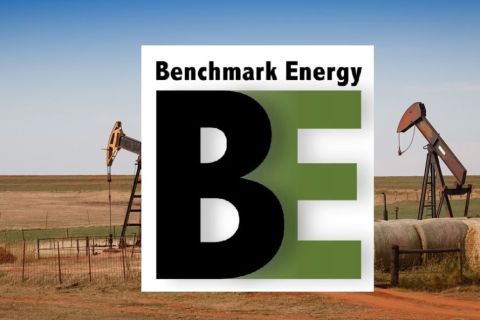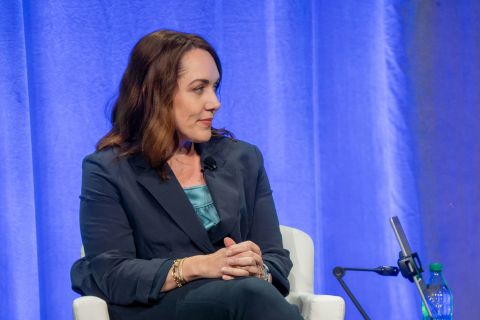
Now that several E&Ps have cut 2019 capex by 15% to 20%, the question is whether management teams can adjust quickly enough to reach consistent cash-flow neutrality with sub-$60 oil. (Source: Hart Energy/Shutterstock.com)
[Editor's note: A version of this story appears in the March 2019 edition of Oil and Gas Investor. Subscribe to the magazine here.]
Got free cash flow?
If not, it’s time to get with the program. E&Ps may have been reworking 2019 capex budgets lower in an uncertain environment as NAPE got underway in Houston but, to a company, all were certain on the main course of action going forward. Publicly held E&Ps universally agree that they will become shareholder friendly.
That philosophy encompasses a range of actions from buying back outstanding shares, decreasing burdensome leverage and/or maintaining a consistent dividend, at least for those who provide dividends.
Implied, though not yet realized in a majority of cases, is the need to become free-cash-flow neutral. Most E&Ps are targeting 2020 for getting their corporate heads firmly above water.
This is an important inflection point in oil and gas.
For years, the energy story was about production volume growth. Wall Street showered energy companies with cash to drill holes in the ground. Even in recovery after the 2014 to 2016 price collapse management, teams spoke openly about capital efficiency as frequently as the industry used to talk about being “liquids-rich” after natural gas prices collapsed in 2008.
Wall Street’s closed its wallet for production volume growth at the end of 2017. High oil prices masked the capital shortfall for a while. When commodity prices fell in 2018, energy equities led all sectors down during the financial swoon. From a macro standpoint, energy has fallen from 16% of S&P value at peak in 2008 to 6% currently.
Or, commiserate with the reports of investment bank sell-side personnel who deserve an “A” for effort in promoting the sector, even as they recount brutal one-on-one meetings with an energy indifferent clientele.
Admittedly, energy generated a strong equity market rally year-to-date, but those gains mostly reflect the steep year-end devaluation.
What makes this time different? Watch for the structural impact on the energy business model. The type of companies that thrived in a world of abundant capital and available resources will no longer rule the new era. Back then, the pursuit of production volume growth supported a business model in which C-suite personnel originated out of exploration or operations. Senior management assembled proficient technical and operations teams, really the best and the brightest in exploration and development. Boards of directors bought in on the production volume growth story and structured compensation to reflect gains in production, even as a majority of companies lost money.
Production volume growth rose despite lower inputs of drilling rigs and stimulation crews in the post-2014 recovery.
Now the question is how managerial and technical teams will adjust to a new business reality where the emphasis is on operating profitably within cash flow in a capital-intensive business. E&P management teams now face one of the greatest transformational challenges in recent history, one that requires a different set of managerial skills and an entirely different business philosophy.
There have been some dry runs. Discussion about free-cash-flow neutrality has been ongoing for half a decade. Since 2014, E&Ps have promised to reach rationality in business within the preceding two years. Each year, that time frame was pushed out another year.
E&Ps received temporary reprieve with the one-year oil price rally that ended in September 2018. The windfall was directed mostly into operations with some allocation to shareholders. However, the commodity price tailwind hampered the industry’s ability to turn away from the production volume growth narrative in favor of business rationality.
Instead, E&Ps generated terms like capital efficiency to explain how they were getting better in operations even while earnings reports show many lost money as a business. During the five-year period ending in 2017, a basket of E&P firms spent $1.40 for every $1 in revenue. That was not a sustainable business model
There is good news. The sector in aggregate reached zero outspend at the end of the third quarter of 2018. However, the demographics were lopsided with about 30% of the sector generating positive cash flow—mostly larger publicly held companies operating in the Permian Basin. Two-thirds of publicly held E&Ps remained on the outspend treadmill. The sector benefitted as oil prices topped out in the mid-$70 range.
Those days are gone. Several E&Ps are cutting 2019 capex by 15% to 20%. Now the question is whether management teams can adjust quickly enough to reach consistent cash-flow neutrality with sub-$60 oil.
Richard Mason can be reached at rmason@hartenergy.com.
Recommended Reading
Enverus: 1Q Upstream Deals Hit $51B, but Consolidation is Slowing
2024-04-23 - Oil and gas dealmaking continued at a high clip in the first quarter, especially in the Permian Basin. But a thinning list of potential takeout targets, and an invigorated Federal Trade Commission, are chilling the red-hot M&A market.
EIA: Permian, Bakken Associated Gas Growth Pressures NatGas Producers
2024-04-18 - Near-record associated gas volumes from U.S. oil basins continue to put pressure on dry gas producers, which are curtailing output and cutting rigs.
Benchmark Closes Anadarko Deal, Hunts for More M&A
2024-04-17 - Benchmark Energy II closed a $145 million acquisition of western Anadarko Basin assets—and the company is hunting for more low-decline, mature assets to acquire.
‘Monster’ Gas: Aethon’s 16,000-foot Dive in Haynesville West
2024-04-09 - Aethon Energy’s COO described challenges in the far western Haynesville stepout, while other operators opened their books on the latest in the legacy Haynesville at Hart Energy’s DUG GAS+ Conference and Expo in Shreveport, Louisiana.




